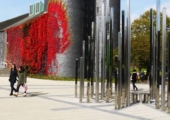December 12, 2017
A 300 year old idea explains some of the enduring appeal of the open plan
In the 18th Century the utilitarian philosopher Jeremy Bentham came up with his idea of the Panopticon, a prison building with a central tower encircled by cells so that each person in the cells knew they could be watched at all times. Whether they were observed or not was actually immaterial. Bentham called it ‘a new mode of obtaining power of mind over mind’ and while he focused on its use as a prison, he was also aware of the idea’s usefulness for schools, asylums and hospitals. Bentham got the original idea following a visit to Belarus to see his brother who was managing sites there and had used the idea of a circular building at the centre of an industrial compound to allow a small number of managers to oversee the activities of a large workforce. This is something of a precursor of the scientific management theories of Frederick Taylor that continue to influence the way we work and manage people.















December 14, 2017
How designers copy nature to create new and extraordinary forms
by Charles Marks • Comment, Workplace design
Humans have a long track record of turning to Nature for inspiration. When Leonardo da Vinci turned his mind to the challenge of acquiring the power of flight for mankind, his sketches show he believed the solution lay in mimicking the form and function of bat wings. We’ve learned a lot about aerodynamics since the fifteenth Century but nature continues to provide a blueprint for the way we design materials and structures. Researchers at the University of Alabama have recently won a grant from the US National Science Foundation to explore how the scales on the wings of butterflies (pictured) help the creatures to fly in the hope that it will help engineers design better and more efficient aircraft.
(more…)